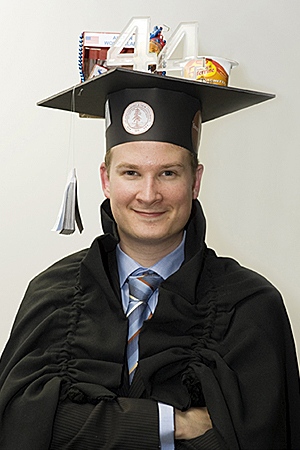Alexander Brost
Image Processing for Fluoroscopy Guided Atrial Fibrillation Ablation Procedures
Abstract
Atrial fibrillation is a common heart arrhythmia and is associated with an increased risk of stroke. The current state-of-the-art treatment option is the minimally invasive catheter ablation. During such procedures, the four pulmonary veins attached to the left atrium are electrically isolated. New methods to guide these procedures are presented in this work.
Two methods for catheter reconstruction from two views are presented and evaluated. The first method focuses on the circumferential mapping catheter and the second on the cryo-balloon catheter. The result of the mapping catheter reconstruction is later used for the motion compensation methods.
As there is currently no planning support for single-shot-devices like the cryo-balloon catheter, a planning tool is presented, the Atrial Fibrillation Ablation Planning Tool (AFiT). AFiT provides direct visual feedback about the fit of a cyro-balloon to the patient’s anatomy. Another tool to provide intra-procedural support is the tracking of cyro-balloon catheters. Visual feedback about the position and dimensions of the balloon catheter can be superimposed onto live fluoroscopy.
In order to provide overlay images in sync with live fluoroscopic images, cardiac and respiratory motion must be taken into account. Therefore, several novel approaches for motion compensation are presented. The methods differ in their targeted application. A novel method, particularly designed for monoplane image acquisition, facilitates motion compensation by model-based 2-D/2-D registration. Another novel method focuses on simultaneous biplane image acquisition, requiring a 3-D catheter model of the circumferential mapping catheter. Motion compensation is then achieved by using a model-based 2-D/3-D registration to simultaneously acquired biplane images. As simultaneous biplane acquisition is rarely used in clinical practice, a new approach for a constrained model-based 2-D/3-D registration is presented to facilitate motion compensation using sequentially acquired biplane images. The search space of the registration is restricted to be parallel to the image plane. To further extend this approach, a novel method is proposed that involves a patient-specific motion model. A biplane training phase is used to generate this motion model, which is afterwards used to constrain the model-based registration. Overall, our motion compensation approaches achieve a tracking accuracy of less than 2.00 mm in 97.90 % of the frames.
As the circumferential mapping catheter needs to be moved during the procedure, a novel method to detect this motion is introduced. This approach requires the tracking of the mapping catheter and a virtual reference point on the coronary sinus catheter. As soon as the relative distance between circumferential mapping catheter and the reference point changes more than 5 %, non-physiological motion can be considered. We also investigated an option to provide motion compensation when the circumferential mapping catheter is not available. We propose a novel method for compensation using the coronary sinus catheter that requires a training phase. Our method outperforms a similar method reported in literature. We can conclude that motion compensation using the coronary sinus catheter is possible, but it is not as accurate as it could be using the circumferential mapping catheter.
